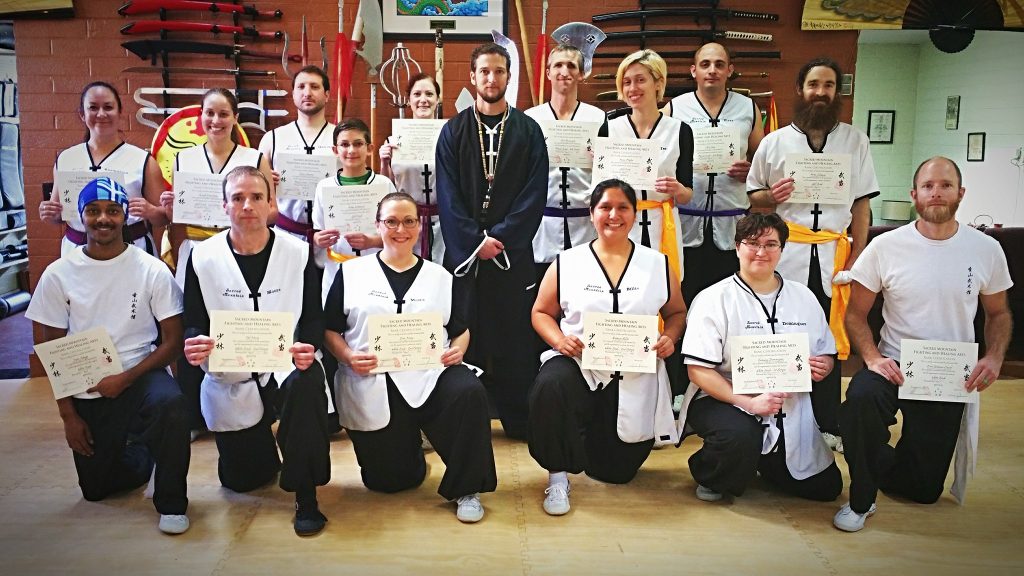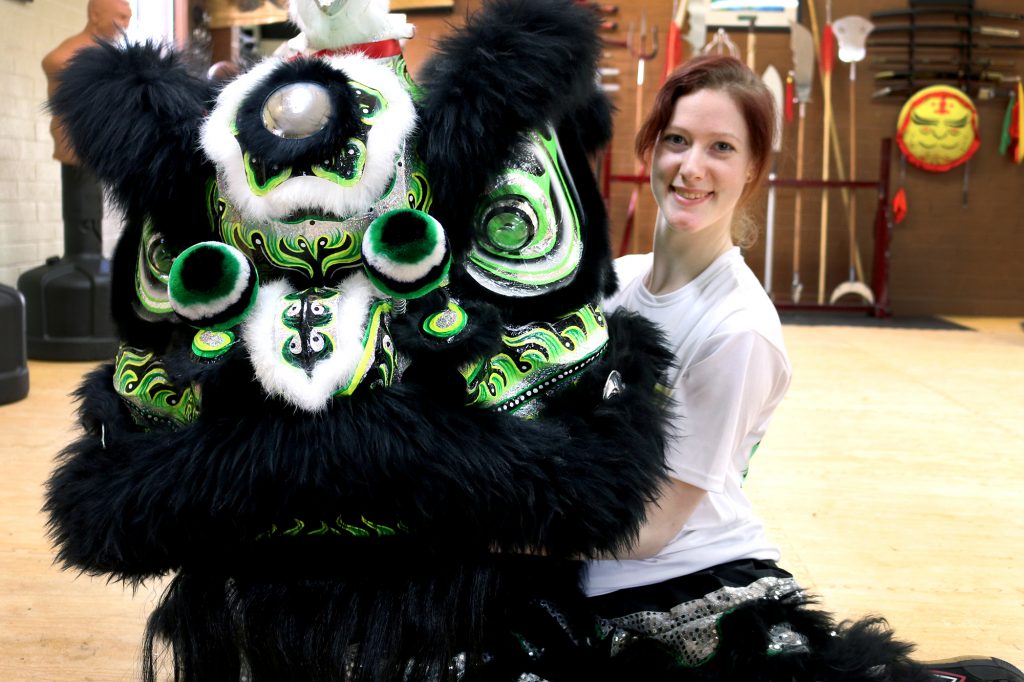By Carly Banks
NAU Communications
Being a high school mascot usually doesn’t lend many skills to future jobs. But that didn’t stop Northern Arizona University senior Colleen McDowell, who was Prescott High School’s Badger mascot for three years, from including it on her resume.
“It makes a great ice-breaker during interviews, and it certainly makes me stand out from the rest of the candidates!”
When she started attending NAU in 2013, she thought about trying out to be Louie the Lumberjack, but a masculine body structure was a prerequisite.
“I wanted nothing more than to return to entertaining crowds and making them cheer as I was disguised in a larger-than-life costume,” she said. “But I began to realize my mascot days were over for good.”
And that was OK, she thought. Sometimes fond memories are short-lived for a reason. Besides, the chances of another opportunity to portray such a character presenting itself in the future was not very likely.
After switching from a biology major to secondary education biology, McDowell struggled her sophomore year with her class load and the obstacles life threw her way. She had yet to find her niche, her happy place that her high school persona provided—depression hit hard.
“I saw little to no worth in myself. I was recovering from a year of medical leave due to severe migraines and fainting spells, picking up the pieces from a broken-off engagement and coping with being an individual with high-functioning autism,” she said. “I was told that I was sheltered and not strong enough, and I felt like a failure. My physical and mental health were in shambles.”
Instead of letting life’s hardships get the best of her, she decided to do something about it. She began looking into unconventional ways to battle her depression and boost her self-esteem outside of prescription medication. Through her research, she discovered martial arts. One of its many benefits she continually read about: building self-confidence.
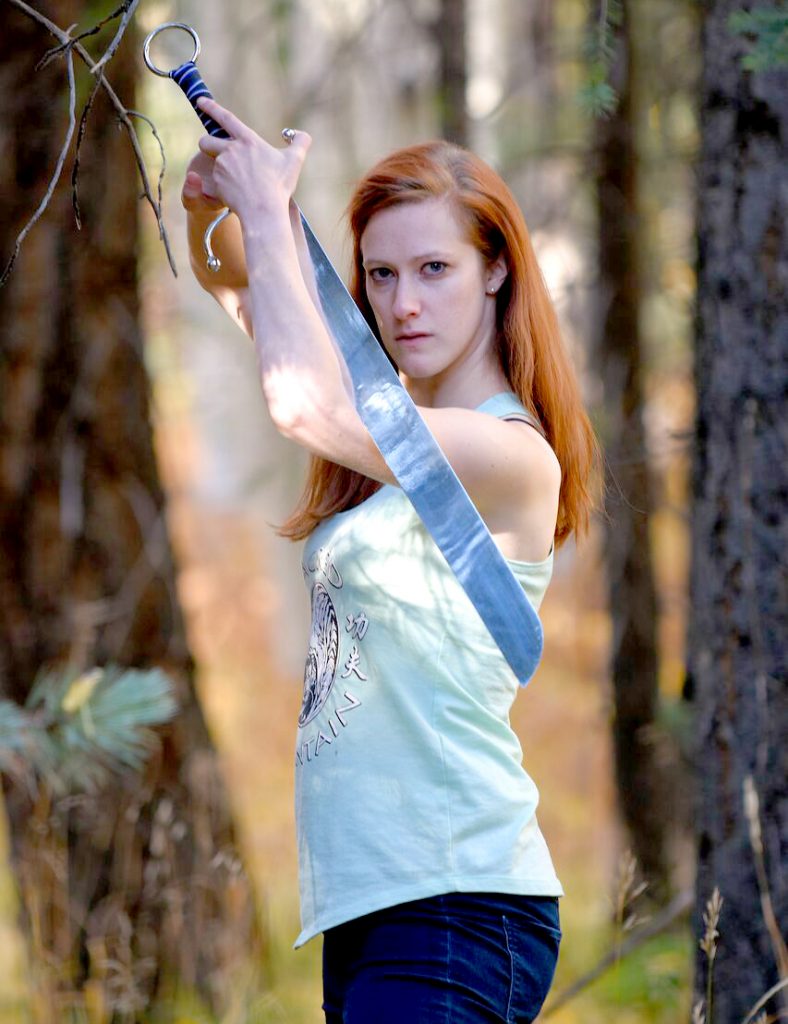
In the spring of 2016, McDowell returned to NAU, and when she did, she enrolled in PES100 (now FIT100)—a two-credit, semester-long Chinese Martial Arts course through Sacred Mountain Fighting and Healing Arts.
Less than a week into the semester, she was addicted to kung fu.
Through training, she found she was capable of far more than she gave herself credit for. She began to see the positive effects kung fu had on her mind, body and spirit.
After the NAU course ended, McDowell enrolled as a full-time student at the martial arts school, embracing the challenge of balancing her NAU coursework, student teaching, martial arts training and an on-campus job—something that would have intimated her just six months prior.
Head instructor, school owner and NAU alumnus Matthew Banks—whom his students call “sifu,” which means “teacher” in Chinese—tells his students that kung fu is more than just a martial art; it’s a lifestyle.
“Kung fu actually translates to skill acquired through hard work and effort,” Banks said. “Anything in life can be considered good kung fu so long as you try your hardest and do your best. Kung fu can be applied to everyone’s daily life, whether it’s taking a test or running a marathon.”
There are the obvious benefits to continued training: increasing flexibility, building strength and stamina, learning how to defend yourself—but what McDowell didn’t expect was the effect martial arts would have outside of her kung fu classroom, and in the high school biology classroom at Coconino High School where she student teaches.
“Just like when facing an opponent, you cannot anticipate what is going to happen in the classroom, even if you do have a solid plan,” she said. “I do not land every punch and kick during training, and every strategy I try as a teacher is not going to work with every student. In either circumstance, that does not mean the fight is over. Just like Sifu Banks says, there is more than one way up the mountain.”
Over the course of the next year, Banks witnessed the hard work McDowell put into her training—showing up early, leaving late and attending open-training sessions to build on the skills she was taught during class. He extended an invite for her to attend the next lion dance practice—an exclusive group of students who performed a form of traditional Chinese dance that mimicked a lion’s movements.
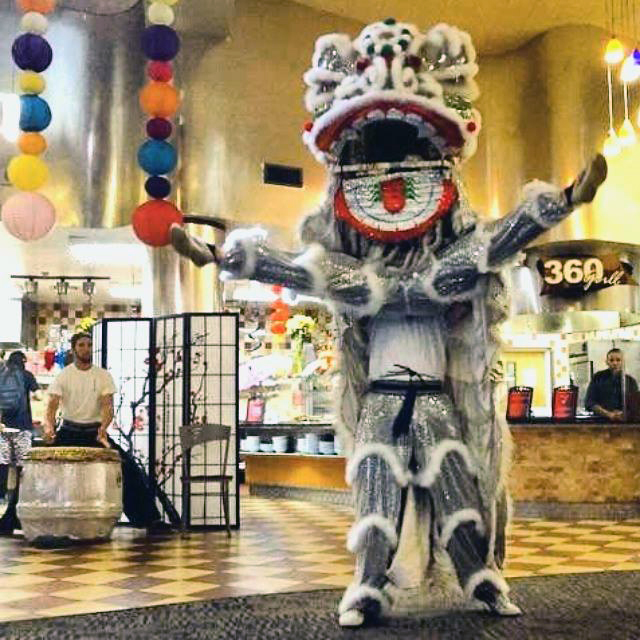
The best part? The dances are performed while wearing a larger-than-life lion costume.
By now, McDowell had seen several lion dance performances by Sacred Mountain, and had hoped she could join the team someday. She was ecstatic.
“Lion dancing is one of the toughest things I have ever done, but it is seriously so much fun! You get to be ferocious and playful at the same time, and this creates an exciting atmosphere for any event. It combines two of my favorite talents: dance and martial arts.”
Unlike her Badger glory days, McDowell quickly realized being underneath the lion required a lot more work than just passing out high-fives and posing for photos. The lion, which is essentially a giant puppet, requires two people to control it: a head and a tail. Working the front of the lion requires constant maneuvering of the head and using the strings inside that control the eyes, ears and mouth to mimic the mannerisms and movements of a real lion. Being at the back of the puppet requires low stances held for long durations, in addition to being able to lift up your partner when the lion stands on its back legs. Two people have to become one to realistically make the lion come to life. Watch some of the Sacred Mountain dancers talk about what it’s like to be inside the lion.
“It is a lot to remember and become accustomed to during the first few months of lion dance training,” McDowell said. “One time, we were doing a practice dance, and during the portion where the lion sleeps, Sifu walked up to me inside the lion’s head and said, ‘Lions sleep with their eyes closed!’ because I had forgotten to pull the string and close its eyes.”
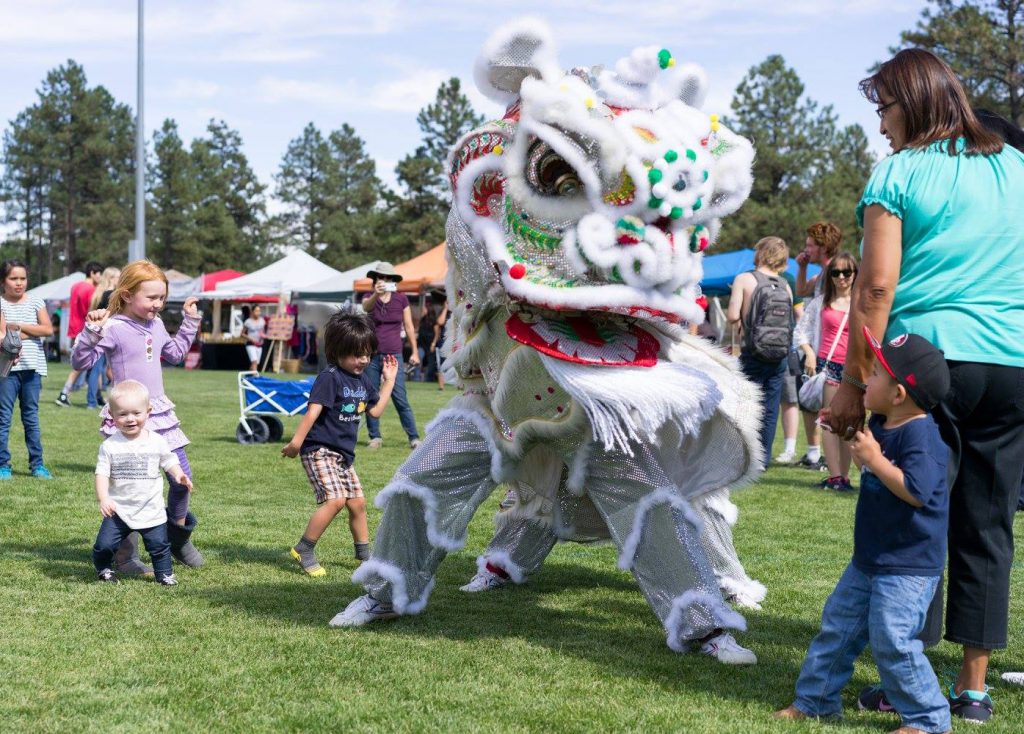
Traditionally, lion dances are performed on Chinese New Year to drive out negativity and bring good luck and fortune. Hour-long practices every week over the course of the last year have helped the team prepare for this special celebration. McDowell and the Sacred Mountain Lion Dance Team will be performing several dances to ring in the year of the dog on Feb. 16.
“Witnessing a Chinese lion dance is truly an incredible experience for people of all ages; it provides an insight into a tradition that dates back more than 2,000 years,” Banks said. “You do not have to be Chinese to appreciate what the lion represents.”
This year, two new lions will join Zhì Zhě, or Wise Elder, with whom the team has performed at the Cornucopia Festival, Pat Tillman Run, Flagstaff Public Library, Coconino High School and a multitude of NAU events and graduations over the last three years. With the help of translations by NAU Chinese lecturer Di Wu, the lions were named Shèng Shān, which means Sacred Mountain, and Xiǎo Lóng, which translates to Little Dragon. Dances will be performed at 11:30 a.m., 12:30 p.m. and 1:30 p.m. on Feb. 16 in the Hot Spot at the University Union. The team of lions also will make the rounds throughout downtown Flagstaff later that night, stopping in to surprise restaurant- and bar-goers with a dance at several locations including Street Side Saigon, Dara Thai, Monte Vista Lounge, Flagstaff Brewing Company, Karma Sushi, The McMillian and Uptown Pubhouse. Specific times and details can be found on Sacred Mountain’s Facebook page.
As for McDowell, who is working toward earning her first-degree black belt, lion dancing has provided yet another item to add to her growing resume, and more importantly, she has finally found her happy place.
“Martial arts helped me redefine what my limits are, and kung fu has given me more than a lifestyle—it has given me a family.”
